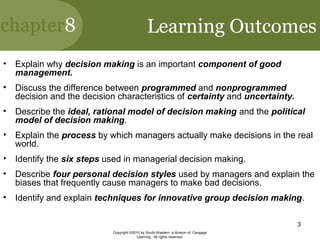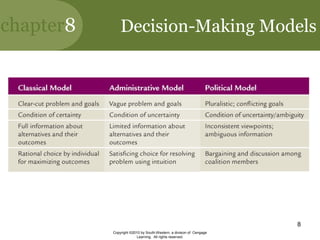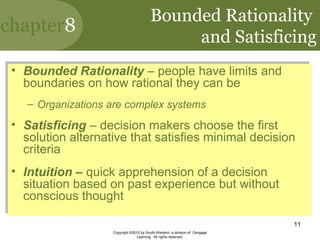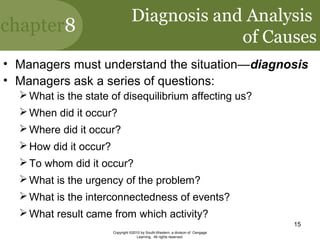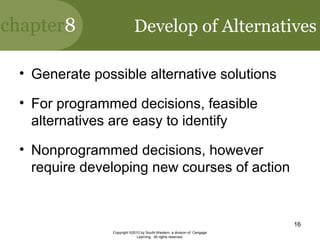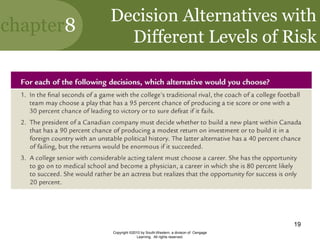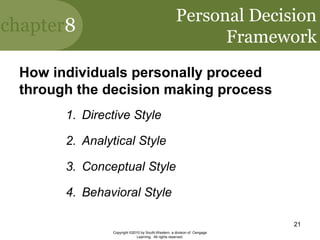This document discusses managerial decision making. It explains that decision making is an important part of management and discusses different types of decisions like programmed and nonprogrammed. It describes models of decision making, like the rational model and political model. The document outlines the six steps of decision making - recognizing the need, diagnosing causes, developing alternatives, selecting an alternative, implementing it, and providing feedback. It also discusses personal decision styles, biases that can lead to bad decisions, and techniques for innovative group decision making.


